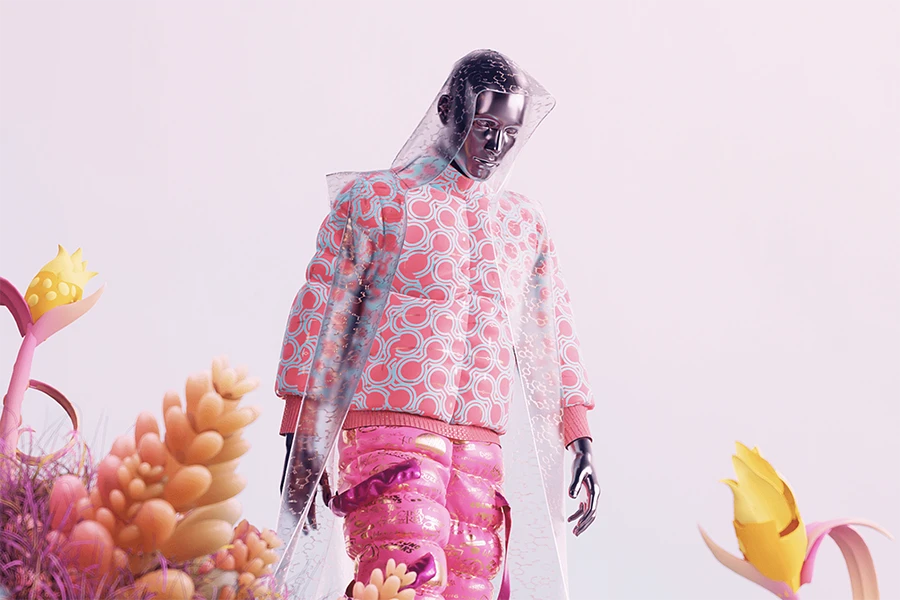How did NFTs become one of fashion’s hottest commodities?
6 September 2022
You’ve most likely noticed the huge buzz around NFTs (non-fungible tokens) since the beginning of 2021. If you haven’t, to illustrate the monumental rise of the NFT market, the trading of NFTs in 2021 increased to more than $17 billion, up by 21,000% over 2020’s total of $82 million.
As an industry that rarely misses a trend, fashion would naturally get in on the NFT boom, offering new opportunities for brands to connect with customers, foster community and generate revenue through new digital assets in a virtual world.
As much as ‘dressing your digital self’ seems like a wild concept directly from some Philip K Dick science fiction, the fact is digital fashion has been around for quite some time. This is particularly the case when you take into account the gaming industry and games such as Fortnite and Minecraft. In fact, Balenciaga partnered with Epic Games to bring the first-ever high-fashion Fortnite skins to the game.
But what exactly are NFTs? How are they being used in the world of fashion?
What are NFTs?
NFTs are bitcoin-like digital tokens that act like a certificate of ownership that live on a blockchain which records transaction history – a decentralised, digital ledger. As well as virtual products that customers can wear within the metaverse; fashion NFTs might be digital content that owners can interact with; or digital copies of physical garments or sneakers.
Why are fashion brands releasing NFTs?
Brands, particularly those within athletic footwear and luxury designer goods, are concerned about protecting their intellectual property in the physical world. This has been even more prevalent with the cost of living squeeze which has witnessed a rise in fake goods. The production of NFTs is a means to protect their intellectual property in the digital world.
That’s one reason, but not the driver. There is a belief in the years to come that your digital world, your online social presence is going to become more important, perhaps more so than your physical presence. For some Gen Z young adults, this might already be the case.
More brands are offering a digital copy when consumers purchase a physical product. In some cases, the NFT has far more value than the sneakers or item of clothing. Dolce & Gabbana’s record-breaking Collezione Genesi, the first luxury NFT collection to include digital and physical works, achieved $5.7m at auction.
There’s every chance we’ll witness consumers purchasing a NFT with a physical product. When buying a t-shirt, will we be able to buy in small, medium, large, extra large and NFT?
However, fashion brands have entered the NFT space as more of a marketing device to reach new and untapped audiences and get closer to their existing community.
For example, Adam Bomb Squad is an NFT project by streetwear brand The Hundreds, consisting of 25,000 unique combinations of bombs and accompanying backgrounds from our two decades of history. Ownership grants you membership cards that come with perks directly from Adam Bomb Squad and the community.
Exclusive access and gatekeeping
NFTs are inherently exclusive and limited in nature, appealing to the same aspirational qualities as a rare handbag or limited-edition sneakers. Another streetwear brand, Warren Lotas, released NFTs which would give owners exclusive access to the second floor of their Los Angeles store, creating a hangout space dubbed Greeley’s Saloon, with sofas and a pool table.
Fashion model Bella Hadid is releasing 11,111 unique NFTs that will then provide access to real-life events and experiences with her, as well as access to subsequent NFT releases. Eventually, they will also be able to use their NFTs as playable characters in different existing metaverses.
NFTs in fashion is just beginning
The fashion industry is merely scratching the surface when it comes to the possibilities surrounding NFTs. Although its explosive growth has since cooled, there are far more buyers in the market than at the start of 2021.
The fashion industry requires some innovative applications of NFTs, rather than just digital assets to be bought and then potentially resold. Partly because if big brands want to spearhead sustainability and a green revolution, the creation of NFTs which then harvest huge amounts of energy to authenticate them in a blockchain are a complete conflict of these interests. Brands that perhaps wanted to drop a NFT to make money, are now having to rethink their strategy and reasons for doing so.